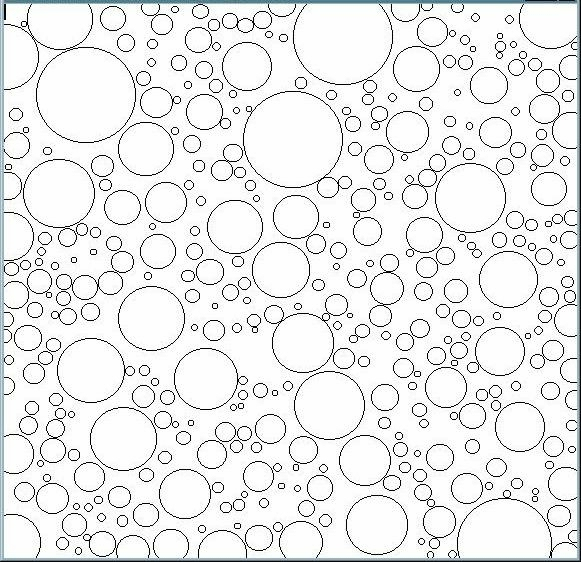9.

If you don't know how to draw the circles, then you will need to print them out, which is less fun.
Use the code of the circleIntersect method that is given below to test whether two circles intersect. To randomly generate a circle, simply pick random x- and y- positions between 0 and 300 for the center and a random radius between 1 and 30. Compare each newly generated circle with all other circles before you add it. If the new circle passes the test, add it to the end of the array. Note that the array will have fewer elements than the number of generated circles since you are rejecting some of the circles.
Part of the code for the component class has been provided for you. Look for comments enclosed in "/** . . . */" which give you suggestions of how to complete the class.
public class CirclesComponent extends JComponent
{
public CirclesComponent()
{
circles = new ArrayList<Ellipse2D.Double>();
// fill circles array list with circles
for (int i = 1; i <= NCIRCLES; i++)
{
// Set the values of x, y and r to three randomly generated values.
// Then, create a new Circle (Ellipse2D.Double) using these values
// Check that the new circle does not intersect a previous one.
// You will need to iterate through the array list and verify
// that the current circle does not intersect with a circle
/// in the array list.
// Add the circle to the array list if it does not intersect
// with another one.
}
}
/**
Test if two circles intersect.
(distance between centers is less than sum of radii)
@param c1 the first circle
@param c2 the second circle
@return true if c1 and c2 intersect
*/
public boolean circlesIntersect(Ellipse2D.Double c1,
Ellipse2D.Double c2)
{
double radius1 = c1.getWidth() / 2;
double radius2 = c2.getWidth() / 2;
double dx = c1.getX() + radius1 - c2.getX() - radius2;
double dy = c1.getY() + radius1 - c2.getY() - radius2;
double distance = Math.sqrt(dx * dx + dy * dy);
return distance < radius1 + radius2;
}
public void paintComponent(Graphics g)
{
Graphics2D g2 = (Graphics2D) g;
for (. . .) // iterate through every circle in the list
g2.draw(. . .); // draw the circle
}
private ArrayList<Ellipse2D.Double> circles;
}
Complete
this class.